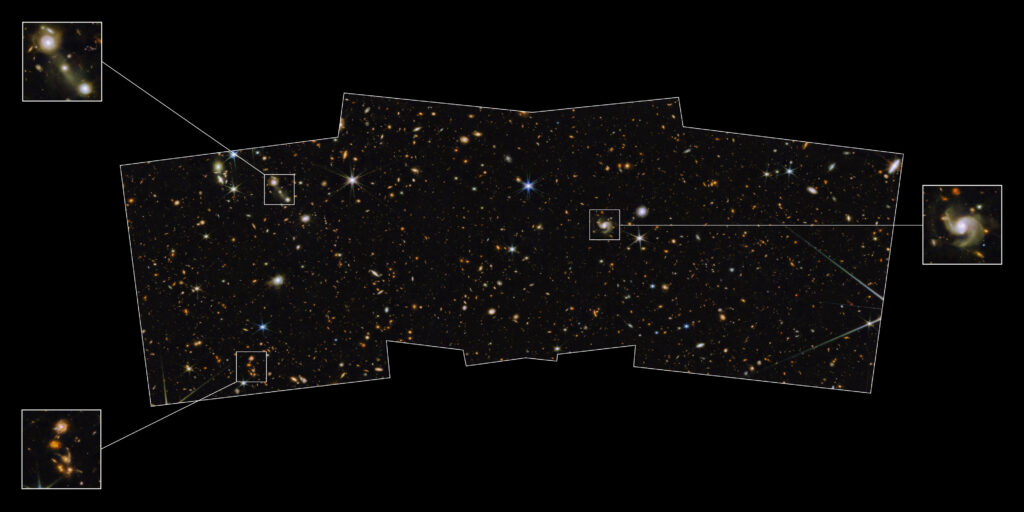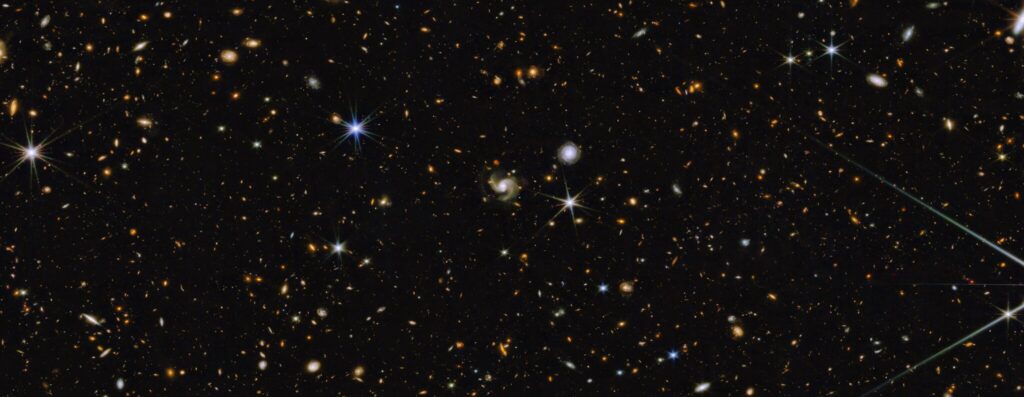The James Webb Space Telescope (JWST) has received one of its first wide-angle images of medium-depth space. It shows thousands of different galaxies.

The image was taken as part of the PEARLS project, which aimed to study galaxies, large-scale structures of the Universe and supermassive black holes. The photo covers a section of the sky known as the North Ecliptic Pole. It corresponds to about 2% of the area of the disk of the full Moon.
The term “average depth” refers to the weakest objects that can be seen in the image. They have the 29th magnitude. This is about a billion times fainter than can be seen with the naked eye.

The absolute majority of objects in the JWST image are distant galaxies. Some are located relatively close to the Milky Way, and some are at the very edge of the observable Universe. However, the photo also shows several near-plan stars that are located in our home galaxy. They can be identified by the presence of diffraction rays.
It is worth saying that the presented picture is a combined image. It was compiled on the basis of data obtained by the NIRCam camera installed on JWST (eight channels of near-infrared light) and the WFC3 camera installed on the Hubble telescope (three channels of ultraviolet and visible light). According to the researchers, the JWST data helped them to reveal unprecedented details that had previously remained hidden from both Hubble and ground-based observatories.
Earlier we talked about how James Webb found a galaxy 13.5 billion years old.
According to https://phys.org
Follow us on Twitter to get the most interesting space news in time
https://twitter.com/ust_magazine

